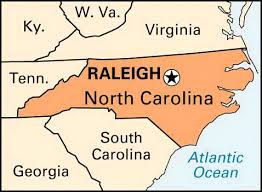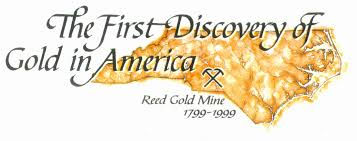
Kings Mountain, NC is the site of the famous Battle of Kings Mountain that was fought near here during the Revolutionary War. It was a decisive victory for the Patriot militia over the Loyalist militia in the Southern campaign of the American Revolutionary War. The battle took place on October 7, 1780, where the Patriot militia defeated the Loyalist militia commanded by British Major Patrick Ferguson of the 71st Foot.

The town of McAdenville, North Carolina is named "Christmas Town USA," and with good reason. Each year, the small town of less than 700 residents comes alive each winter with a fantastic light display that draws in over 600,000 visitors annually. Located about 15 miles west of Charlotte, a visit to the tiny town has been a holiday tradition for most locals for over 50 years. The town of McAdenville itself puts up over 500,000 lights, and the majority of residents decorate their houses as well.

The Easter season has been most honored in the Moravian faith for hundreds of years. From the first Easter sunrise service in 1772, Old Salem takes part in the tradition that continues today. Old Salem Museums & Gardens observe the holiday with an event the Saturday before Easter where guests can take part in traditional Easter crafts and activities such as sharing vesper, an afternoon snack, and decorating Easter eggs in a historic fashion. A modern Easter Egg Hunt happens on that day.

The Queen City was founded in 1768 and named for Queen Charlotte, wife of King George III of England. Charlotte was originally built at the crossroads of two Native-American trading paths. The intersection of these two paths, now major streets, is known as the heart of Charlotte – “Trade & Tryon.”

Due to a steady influx of pioneers to North Carolina’s backcountry, by 1840 Lincoln County was one of the largest and most populous counties in NC. Of particular significance, around 1813 Michael Schenck established the first successful textile mill south of New England. In 1816 it was destroyed by a flood, but three years later Schenck, J. Bivens, and J. Hoke built a larger plant, the Lincoln Cotton Mills, on the South Fork of the Catawba River, which operated until the Civil War.

Greene was a major general of the Continental Army in the American Revolutionary War, known for his successful command in the Southern Campaign, forcing British general Charles Cornwallis to abandon the Carolinas and head for Virginia. When the war began, Greene was a militia private, the lowest rank possible; he emerged from the war with a reputation as George Washington's most gifted and dependable officer. Many places in the United States are named for him including Greensboro, NC.

Several locations served as the seat of government for NC before Raleigh was chosen as its permanent capital. For most of the colonial period, the capital was situated in whatever town the governor lived. The colony's records, stored at different locations, were carted from place to place, often suffering loss and damage in the process. New Bern served as capital in 1766, but after the Revolutionary War, Raleigh became the permanent capital because of its central location.

From a small railroad depot, to a booming tobacco town, to a sophisticated urban destination, Durham, NC has evolved into a diverse city where remembering those historical roots has become a signature of civic pride. Durham today encompasses much of The Research Triangle Park – the leading and largest high technology research and science park in North America. Duke University is located in Durham which is known as the place where great things happen.

The state of North Carolina chartered the University of North Carolina in 1789, and construction on the campus began in 1793. The university was the first public university in the country to admit students when it opened in 1795. Graduating its first class in 1798, UNC was the only public institution to confer degrees in the 18th century.

Reed Gold Mine, located in Concord, NC, is the site of the first documented gold find in the United States. During its peak years, gold mining was second only to farming in the number of North Carolinians it employed. The estimated value of gold recovered reached over one million dollars a year. North Carolina led the nation in gold production until 1848, when it was taken over by the great rush to California.